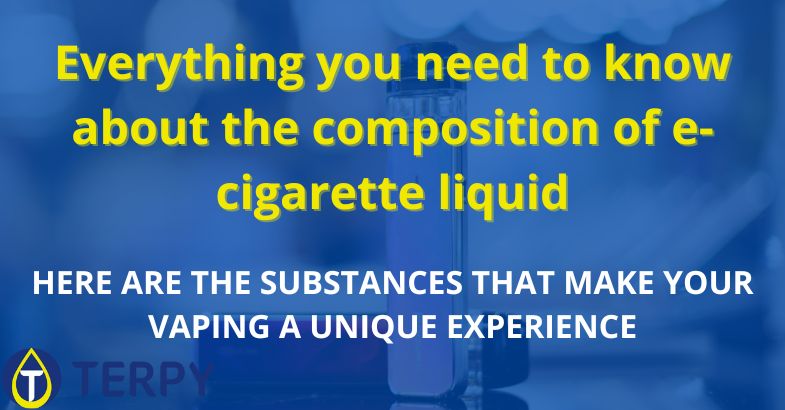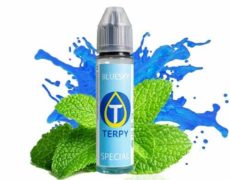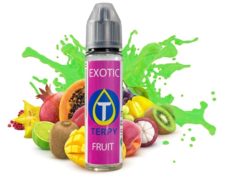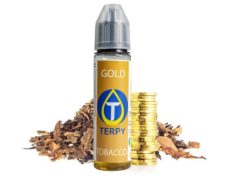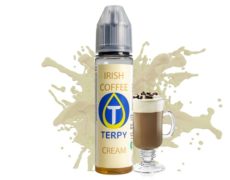Modified on: 24/05/2024
HERE ARE THE SUBSTANCES THAT MAKE YOUR VAPING A UNIQUE EXPERIENCE
Since the electronic cigarette entered the scene, many traditional smokers have found it to be a healthier and, in many ways, also cheaper alternative.
But what makes the magic of vaping possible?
It’s all thanks to the particular composition of e-cigarette liquids. And today we’ll take you on a fascinating journey into the world of ingredients used to make e-liquids, exploring the secrets behind propylene glycol (PG), vegetable glycerin (VG), liquid nicotine and concentrated flavors.
Prepare to immerse yourself in a world of flavors, personalized choices and velvety clouds of vapor.
What is propylene glycol?
Glycolic propylene is a colorless, odorless and slightly sweet liquid, which is obtained from the hydration reaction of propylene oxide. It is a biodegradable compound with low toxicity, which is used in many industrial sectors as a preservative, humectant, solvent or emollient. We find it, for example, in many pharmaceutical, cosmetic, detergent and food products.
PG has several properties that make it suitable for use in electronic cigarettes. First of all, it is an excellent vehicle for concentrated aromas, as it has no taste or odor and transports them without altering them. It is also a fluid liquid that facilitates the absorption of the resistance cotton and lowers their operating temperatures. Finally, it has a strong hygroscopic power, i.e. it absorbs humidity from the air, keeping the environment humid and encouraging the formation of dense and persistent vapour.
Propylene glycol is considered safe for use in e-cigarettes, as it does not have long-term harmful effects or cause addiction. However, some people may be allergic or intolerant to PG and experience symptoms such as throat irritation, cough, headache or nausea. In these cases, it is recommended to reduce its concentration or opt for pure VG-based liquids. Furthermore, PG can cause slight dehydration due to its hygroscopic power. For this reason, it is important to drink plenty of water while vaping and maintain good oral hygiene.


The characteristics of vegetable glycerin
Vegetable glycerin is a liquid, colorless and odorless substance obtained from vegetable fats. It has a slightly sweet flavor and a viscous consistency and is used in several industries, including, of course. that of vaping.
In the electronic cigarette, vegetable glycerin is one of the two main components of the base liquid, together with propylene glycol (PG).
VG has several properties that make it suitable for e-liquids, including:
produces large quantities of dense and full-bodied vapor during vaping;
acts as a solvent for flavors and nicotine, keeping the liquid stable and homogeneous;
has an emollient effect on the mucous membranes of the mouth, counteracting the dry mouth that can be caused by PG;
It has a sweetening effect on the taste of the liquid, making it more pleasant. Be careful though: if present in excessive quantities, it can negatively affect the perception of the aroma of the e-liquid.
Vegetable glycerin is not toxic or harmful to health. It is a substance approved by the World Health Organization and the European Union as a food and cosmetic additive and there is no scientific evidence demonstrating negative effects resulting from its use in e-cigs.
However, it also has characteristics that can negatively affect the vaping experience:
being very viscous, it can clog the resistance of the e-cig, reducing its performance and duration and causing very annoying jams;
it is not very volatile and therefore can leave residues on the walls of the atomizer, requiring greater cleaning and maintenance of the device;
VG is a very viscous liquid. As a result, it requires more battery power output to vaporize effectively;
being little reactive with aromas, and due to its sweetish taste (as explained previously) it can attenuate the flavor of the liquid, especially if used in high percentages.
For these reasons, vegetable glycerin is never used alone in the base liquid, but is always mixed with propylene glycol, which has opposite properties.
Read also: Maintenance of your e-cigarette is the key to a better vaping experience
The right ratio between PG and VG? Depends
There is no fixed rule for calculating the ideal concentrations of propylene glycol and vegetable glycerin present in e-liquids. The ratio between PG and VG, in fact, can vary depending on the vaper’s preferences.
In general, you can find liquids with a PG/VG composition of 50/50, 70/30, or 80/20. A higher ratio of propylene glycol promotes the flavor and fluidity of the liquid, while a higher ratio of vegetable glycerin promotes vapor production but reduces throat hit (the sensation of contraction of the larynx) and flavor of the liquid.
In general, it can be said that:
a high concentration of VG (70% or more) is suitable for those looking for spectacular vapor clouds and for those who use sub-ohm atomizers (with resistances less than 1 ohm);
a high concentration of PG (50% and above), however, is ideal for those looking for a sensation as similar as possible to traditional smoking and for those who use atomizers with resistances greater than 1 ohm.
Liquid nicotine: characteristics and effects on the human body
Liquid nicotine is a substance that is added to e-cig liquids to simulate the effect of a traditional cigarette. It is usually sold in 10 ml bottles with different concentrations of active ingredient, ranging from 3 to 20 mg/ml. The choice of concentration depends on the habits and preferences of the smoker.
This product aims to help the smoker reduce or quit the consumption of traditional cigarettes, offering a similar sensation but less harmful to health. In fact, e-cig vapor does not contain the toxic and carcinogenic substances present in tobacco smoke, such as tar, carbon monoxide and heavy metals.
It is produced through a chemical process called extraction which can be performed using various techniques. The most common is to use an aqueous solution of hydrochloric acid that is passed through crushed tobacco leaves so that they release the nicotine in the form of nicotine chloride.
The latter is then separated from the aqueous solution through a distillation or evaporation process. The final product is 99% pure nicotine, which is then diluted in a liquid base to obtain a product suitable for vaping.
It is important to remember, however, that even liquid nicotine, like that contained in blondes, can cause physical and psychological dependence if taken in high doses and for long periods. This is particularly evident when faced with classic withdrawal symptoms, such as irritability, anxiety, nervousness, insomnia, headaches and increased appetite. To avoid all this, it is advisable to gradually reduce the concentration of nicotine in e-cigarette liquids, until it reaches zero, so as to free yourself from this slavery forever.
After all, this is precisely why the electronic cigarette was born: to be able to gradually overcome the addiction to blondes while reducing, at the same time, the negative effects on our body.
Liquid nicotine can also have unwanted side effects if accidentally ingested, such as nausea, vomiting, dizziness, tachycardia, hypertension and tremors. In case of overdose or intoxication it is vital to immediately contact the emergency number 118 and follow the instructions of the healthcare personnel.
What you need to know about concentrated flavors for electronic cigarettes
Concentrated flavors for electronic cigarettes are liquid substances that contain the essence of the flavor you want to obtain in the final product. It is important to remember that they cannot be used alone, but must be diluted with a neutral base, composed of propylene glycol (PG), vegetable glycerin (VG) and nicotine depending on your preferences.
To mix them properly in e-cigarette liquids, you need to follow some steps:
choose the concentrated aroma you prefer, based on taste and quality. In fact, there are many on the market, divided according to the type of their taste, such as fruity, creamy, tobacco-like, etc.;
choose the neutral base with which to dilute the concentrated aroma, based on the percentage of PG/VG and the desired quantity of nicotine;
calculate the percentage of dilution of the concentrated aroma in the neutral base, following the manufacturer’s instructions or your own preferences. The dilution percentage varies depending on the aroma chosen, the base used and the result you want to obtain. In general, it is recommended not to exceed 15-20%, to avoid saturating the flavor and damaging the resistance of the atomizer;
mix the concentrated aroma with the neutral base in an empty bottle, shaking the contents well to mix it. It is advisable to use a graduated bottle or syringe to precisely measure the quantities.
leave the liquid obtained to mature in a cool, dark place for the time necessary to best express the flavor of the product. The maturation time varies depending on the aroma chosen, the base used and your preferences. In general, it is recommended to wait at least a week before using the liquid, but some flavors can take more than a month to fully mature.
What are the differences between organic and synthetic concentrated flavors?
As you may have already understood from the title of the paragraph (and as you probably know well if you are a veteran vaper), concentrated flavors are divided into two categories: organic and synthetic.
The former are obtained by extracting natural ingredients, such as fruit, flowers, herbs, spices, etc. For example, to obtain the strawberry aroma you will macerate the strawberry, for the pineapple aroma you will start from the pineapple and so on.
These flavors are considered more natural and faithful to the original flavor, but they also have disadvantages: they are more expensive, more difficult to find and heavier for the coil which can be quickly damaged by their use.
Synthetic aromas, on the other hand, are those that are created from molecules not present in natural substances, but which reproduce their flavour. They are cheaper, easier to find, and lighter on the coil than organics, but can be less natural and true to the original flavor. However, if they are of good quality they still manage to have an aromatic yield that has nothing to envy of organic ones.
What are the advantages and disadvantages of organic and synthetic flavors?
As we said, organic and synthetic flavors have pros and cons that can influence your choice based on your preferences and needs.
The advantages of organic flavors
They are more natural and faithful to the original flavor;
they are more suitable for those looking for a pure and authentic taste;
they are more suitable for lovers of organic tobaccos.
The disadvantages of organic flavors
They are more expensive and difficult to find;
they are heavier for the coil and require more maintenance;
they are more subject to variations in quality depending on the origin and seasonality of the ingredients.
The advantages of synthetic flavors
– They are cheaper and easier to find;they are lighter for the coil and require less maintenance;
they are more stable and uniform in the average quality of the products on sale.
The disadvantages of synthetic flavors
They are less faithful to the original flavor;
they are less suitable for those looking for a pure and authentic taste;
they are less suitable for lovers of organic tobaccos.


How to choose between organic and synthetic flavors?
There is no single answer to this question, because it depends a lot on your personal tastes and expectations. In general, you can follow these recommendations:
try different types of aromas before deciding which one you like best;
read the reviews of other users to get an idea of the quality of the aromas;
check the dilution percentages recommended by the manufacturers and follow the instructions to obtain the best result during your tests;
also experiment with combinations of multiple aromas to create personalized recipes in line with your tastes;
take into account the type of atomizer you use and the power you set, because these factors can affect the performance of the aromas.
Read also: How to mix e-cigarette liquid: the definitive guide
In conclusion
You have explored the fascinating world of e-cigarette liquids, discovering the secrets behind the main ingredients that make up these liquids. From glycolic propylene to vegetable glycerin, from liquid nicotine to concentrated flavors, you’ve gained an in-depth understanding of what makes your vape unique.
You are now armed with valuable information to personalize your vaping experience, choosing flavors that reflect your tastes and satisfy your preferences. Whether you are a lover of intense, creamy flavors, or prefer the freshness of fruity notes, you have discovered how to select the right ingredients to create the perfect liquid.
All you have to do is put all this into practice: and what better place to do it than the Terpy shop?
On our e-commerce you will find the best vaping products on the market. We are waiting for you!
Take Aways
Propylene glycol (PG) is a biodegradable, low-toxicity liquid widely used in various industrial sectors, including pharmaceuticals, cosmetics and food. In the electronic cigarette, PG acts as a carrier for the aromas and helps produce a dense and persistent vapor.
Vegetable glycerin (VG) is a colorless and odorless liquid obtained from vegetable fats. It is commonly used as the main component in the base of e-cigarette liquids. VG produces large quantities of vapor and has an emollient effect on the mucous membranes of the mouth.
The ratio of PG to VG in e-cigarette liquids can vary depending on personal preference. A high concentration of VG favors the production of vapor, while a high concentration of PG favors the flavor and fluidity of the liquid.
Both propylene glycol and vegetable glycerin are considered safe for use in e-cigarettes, but some people may be allergic or intolerant to either component. It is important to drink plenty of water when vaping and maintain good oral hygiene when using liquids containing PG or VG.
Concentrated flavors for e-cigarettes can be organic or synthetic. Organic flavors are extracted from natural ingredients, while synthetic flavors are created from molecules that reproduce the desired flavor. Both have advantages and disadvantages, and the choice depends on individual preferences. It’s a good idea to try different types of flavors and follow the manufacturer’s instructions for best results.
Questions and answers
What is propylene glycol?
Glycolic propylene is a colorless, odorless and slightly sweet liquid, which is obtained from the hydration reaction of propylene oxide. It is used in many industrial sectors as a preservative, humectant, solvent or emollient.
What are the characteristics of vegetable glycerin?
Vegetable glycerin is a liquid, colorless and odorless substance obtained from vegetable fats. It has several properties that make it suitable for use in e-liquids, such as the production of dense vapor, the emollient effect on the mucous membranes and the sweetening effect on the taste of the liquid.
What is the right ratio between propylene glycol and vegetable glycerin?
There is no fixed rule for calculating the ideal concentrations of propylene glycol and vegetable glycerin in e-cigarette liquids. The ratio can vary depending on the vaper’s preferences, but in general a high concentration of VG favors the production of vapor, while a high concentration of PG favors the flavor and fluidity of the liquid.

